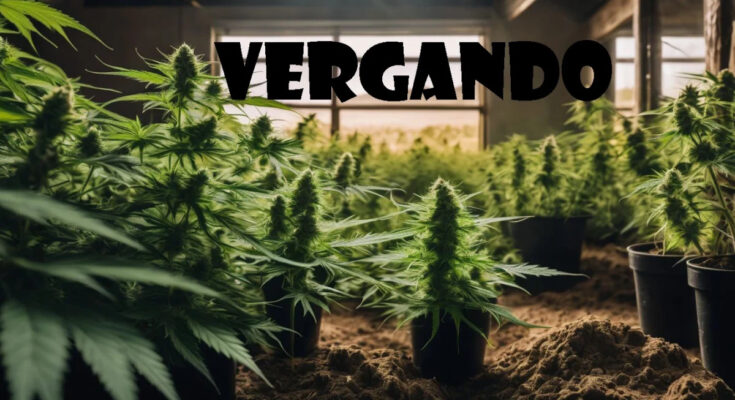Introduction to Vergando
Vergando is a phrase of deep historical and cultural importance. Its meaning and application have evolved throughout time and across languages, beginning with ancient linguistic roots. This blog will trace the historical roots of vergando and explore its cultural significance, providing a thorough grasp of this complicated term.
Historical Background of Vergando
Ancient Origins
Vergando has its roots in ancient cultures. The phrase occurs frequently in classical literature and inscriptions, referring to actions or situations involving bending or yielding. In ancient Rome, for example, was widely employed in both everyday speech and literary works. Its continued presence throughout history emphasizes its importance and versatility.
Early Uses in Classical Literature
In classical literature, vergando was frequently employed to depict both physical movements and metaphorical expressions of flexibility and resilience. Ancient scripts and inscriptions demonstrate its diverse applications, emphasizing its importance in early communication. These early references demonstrate how important was for communicating both tactile and abstract things.
Vergando in Ancient Texts
Ancient texts, ranging from religious scriptures to legal records, frequently used to depict states of surrender and flexibility. These documents provide useful information about how different civilizations understood and used the term. The frequent appearance of in various writings emphasizes its significance and widespread acceptance in ancient society.
Etymology and Linguistic Roots
Latin Origins
Vergando’s etymology reveals that it is derived from the Latin verb “vergere,” which means to bend or incline. This linguistic root influenced the evolution and adaptation of various Romance languages, such as Italian, Spanish, and Portuguese. Understanding its Latin roots provides the groundwork for investigating its various meanings and applications in modern language.
Evolution in Romance Languages
Vergando evolved over time, taking on nuances from numerous languages and dialects is used in many Romance languages, and it frequently retains its original implications of suppleness and yield. This linguistic journey illustrates Vergando’s versatility and long-term usefulness in ordinary lexicon.
Cultural Significance of Vergando
Symbolism in Art and Literature
Vergando has a significant cultural impact, particularly in art and literature. It represents flexibility and resilience, concepts that are firmly rooted in human growth and evolution. Artists and writers have employed to show characters or concepts that exemplify these characteristics, adding depth to their stories.
Representation in Folklore and Mythology
In folklore and mythology, vergando frequently denotes transformation and strength. Myths from numerous cultures tell of heroes and gods who accomplish great things by deeds of These stories highlight cultural ideas and beliefs on flexibility and resilience, emphasizing the significance of adaptability in overcoming obstacles.
Modern Interpretations of Vergando
Contemporary Usage
Vergando has expanded its implications in modern circumstances. Modern interpretations frequently stress psychological and emotional flexibility, emphasizing the significance of adapting to changing situations. In psychology, refers to a person’s ability to remain resilient in the face of stress, demonstrating its continuous importance in dealing with current societal and individual difficulties.
Popular Culture
Vergando has also made its way into popular culture, appearing in films, music, and social media. Its application in these mediums frequently emphasizes themes of overcoming adversity and personal development. This widespread recognition in popular culture demonstrates Vergando’s ongoing appeal and relevance.
Comparative Analysis
Vergando vs. Similar Terms
A comparison of vergando with comparable phrases illustrates its distinct implications and applications. While words like “yielding” and “bending” have some similarities to they frequently lack the cultural and historical complexity that it entails. includes both physical and metaphorical elements, which makes it more versatile in its uses.
Regional Variations
Vergando has evolved distinctively across locations, reflecting linguistic and cultural differences. For example, in Italian, may be used in a poetic sense, yet in Spanish, it may be used in everyday discourse. Understanding the geographical variances enhances the overall significance and usability .
Case Studies and Examples
Notable Uses in Literature and Psychology
Vergando has notable usage in a variety of domains, including literature and psychology. Vergando’s psychology research highlights stress-coping mechanisms, emphasizing the need for mental flexibility. In literature, characters who exhibit frequently demonstrate resilience and the ability to adjust to new situations. These examples demonstrate its practical relevance.
Media Representations
In media and entertainment, vergando is frequently used to describe persons or circumstances that exemplify flexibility and resilience. Movies and TV shows may include protagonists who overcome barriers by acts of , emphasizing their inspirational nature. This representation in the media emphasizes its lasting popularity and relevance.
Misconceptions and Clarifications
Common Misunderstandings
Several prevalent misconceptions concerning vergando require explanation. One common misperception is that refers simply to physical bending, ignoring its metaphorical applications. Another common misperception is that means weakness or submission, whereas in fact it often represents strength through adaptation.
Clarifying the Meaning
Clarifying the meaning of vergando requires investigating its numerous contexts and applications. Vergando’s complexity and breadth can be appreciated by looking at it from historical, linguistic, and cultural viewpoints. This clarity helps to avoid misinterpretations and promotes a more sophisticated understanding of the phrase.
Future Trends
Predicted Evolution
Future trends indicate that will continue to evolve and find new applications. As language and society evolve, may gain new meanings or be utilized in novel ways. Linguists think it will remain relevant, particularly in talks about mental health and resilience.
Conclusion
Vergando stands as a testament to the enduring power of linguistic and cultural adaptation. Its historical roots and evolution through various languages and cultures highlight its versatility and depth. From ancient texts to modern psychological concepts, encapsulates the essence of bending without breaking, symbolizing resilience and adaptability. As we look to the future, the continued relevance of in various fields underscores its importance as a concept that transcends time and context, reflecting the dynamic and resilient nature of human experience.
FAQs
What is vergando?
Vergando is derived from ancient languages, especially Latin, and means to bend or incline. It represents flexibility, resilience, and adaptation, both literally and symbolically.
Where does the term vergando come from?
Vergando is derived from the Latin verb “vergere.” It has evolved over time and influenced many Romance languages, including Italian, Spanish, and Portuguese.
How was vergando used in ancient times?
In ancient writings, vergando was used to express both physical movements and metaphorical states involving bending or yielding. It appeared in classical literature, inscriptions, religious texts, and legal documents.
What is the cultural significance of vergando?
Vergando is associated with flexibility and resilience in a variety of cultural narratives, art, and literature. It is frequently depicted as a characteristic of heroes and mythical beings who conquer obstacles through adaptability and strength.
How is Vergando relevant today?
In modern circumstances, vergando refers to psychological and emotional flexibility. It exists in ordinary language, psychology, and popular culture and represents the need for adjusting to changing circumstances.



